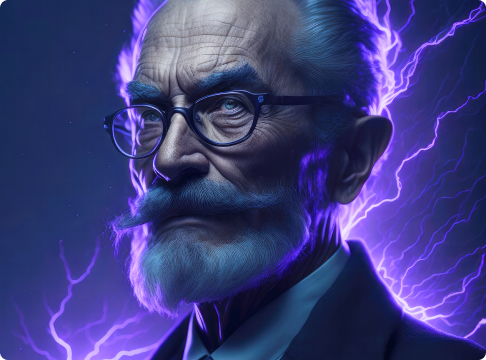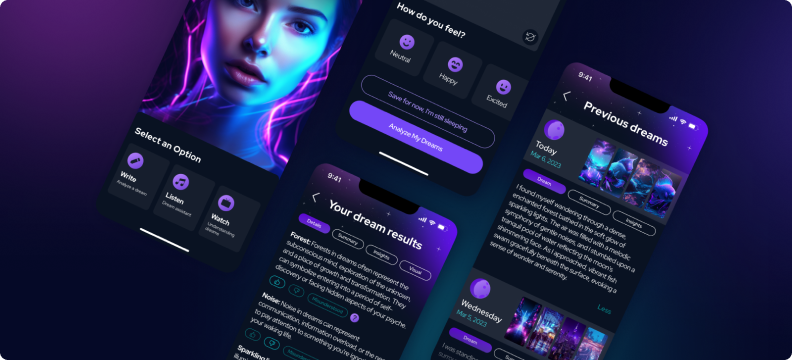Dive into the intriguing world of psychoanalysis with our comprehensive guide to Freud's Theory About Dreams.

For centuries, humans have been intrigued by dreams and their possible meanings. Among the many theories that have emerged, one stands out due to its revolutionary nature - Sigmund Freud's theory about dreams.
Freud didn't see dreams as mere random thoughts or brain activities during sleep. He believed they held deeper meanings, often linked to our unconscious desires and wishes. Let's dive into Freud's fascinating world of dreams and explore its key aspects, methods, influences, and the criticisms it has faced.
Imagine you're dreaming about being chased by a giant cookie. This might sound absurd, but in Freud's view, even such bizarre dreams could hold meaningful messages. To understand these messages, Freud divided dreams into two parts: manifest and latent content.
The manifest content is what you consciously remember when you wake up - for example, being chased by a giant cookie. The latent content, on the other hand, is the underlying meaning, often linked to repressed wishes or desires. So, your cookie-chasing dream might be expressing a hidden desire for indulgence or escape.
Freud proposed that our unconscious mind uses dreams as a stage to express these repressed desires. However, to protect us from disturbing thoughts, it disguises these desires in dream symbols. This process, known as "dream-work", involves mechanisms like condensation (combining several ideas into one symbol), displacement (shifting emotional significance onto another object), and symbolism.
Freud was a master symbol decoder. He believed that certain objects or situations in dreams represent something else, often related to repressed wishes or desires.
For instance, a dream about flying might symbolize a desire for freedom or escape. Freud developed an extensive catalog of such symbols, many of which continue to be used in modern dream analysis.
Here are a few examples:
Like any theory, Freud's dream theory has faced its share of criticism. Some argue that it is too subjective and lacks empirical support. Others contend that not all dreams are wish fulfillments or carry deeper meanings. Instead, they may simply reflect our daily experiences or brain activity during sleep.
Today, many psychologists use Freud's concepts to interpret dreams, although they often take a more flexible approach than his strict theory. This might include using psychoanalytic techniques, cognitive-behavioral therapy, or integrating dream symbols with daily events and experiences.
Despite facing criticisms of Freud's dream theory, his work has left a lasting impact on the field of psychology. It was groundbreaking in suggesting that dreams have meaning and can offer valuable insights into our innermost desires and emotions.
Even though some of his ideas have been challenged over time, many psychologists still incorporate elements of Freud's theory, particularly in psychoanalytic dream interpretation and therapy.
Many contemporary dream analysis techniques owe their origins to Freud's theory. These include free association, where individuals share any thought that comes to mind about elements of their dreams, and symbol analysis, which involves identifying and interpreting symbols in dreams.
These techniques aim to uncover the latent content of dreams, offering profound insights into an individual's unconscious mind. For example, symbols in dreams might reveal repressed childhood memories, unresolved conflicts, or hidden fears and anxieties.
Dream analysis can also be used as an effective therapeutic tool to promote self-awareness and emotional healing. Through guided dream interpretation, individuals can gain a better understanding of their unconscious mind and its impact on their waking life.
Psychoanalytic dream interpretation views dreams as the "royal road to the unconscious," providing a window into our deepest desires, fears, and conflicts. According to Freud's wish fulfillment theory, these unconscious elements often surface in dreams as a form of wish fulfillment, albeit in a disguised form.
Freud's wish fulfillment theory has been further developed by contemporary psychologists who have proposed the existence of "primary process thinking" during dreams. This involves a form of non-linear, symbolic thought which helps us access our unconscious wishes and desires without being hindered by conscious restrictions.
In our quest to understand dreams, we've come a long way from Freud's couch to the cutting-edge technology of today. A perfect example of this progress is SeventhSIGHT. This innovative platform uses patented Machine Learning Artificial Intelligence to analyze the meaning of your dream.

Just as Freud believed in the significance of dreams and their link to our subconscious, SeventhSIGHT also recognizes the power of dreams. But, instead of manually decoding symbols and latent content, it leverages the power of artificial intelligence. It dives into the complex layers of our dreams to provide powerful insights into our daily life, helping us understand what our subconscious is trying to tell us.
There are several theories of dreaming, including Freud's psychoanalytic theory, the activation-synthesis theory, and cognitive theories. Each offers a unique perspective on why we dream and what dreams signify.
Numerous theories attempt to explain dreaming, from biological theories like the activation-synthesis hypothesis to psychological theories like Freud's psychoanalytic theory and cognitive theories.
Freud suggested that much of our behavior is driven by unconscious desires, memories, and experiences. He believed that these unconscious elements could be accessed through dreams, slips of the tongue, and free associations.
According to Freud, the unconscious mind contains desires, memories, and experiences that are too painful or disturbing for us to consciously acknowledge. In contrast, the subconscious mind stores information that we're not actively aware of but can access if needed.